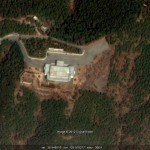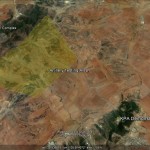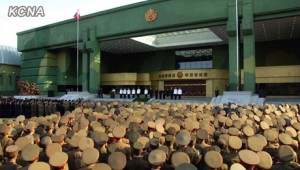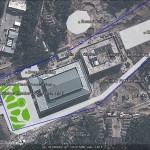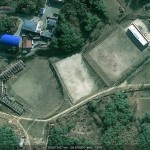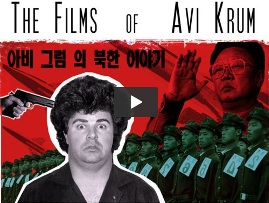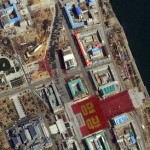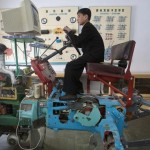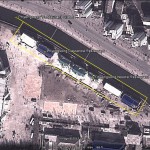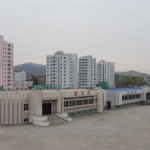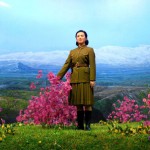According to Yonhap:
President Lee Myung-bak on Friday urged North Korean leader Kim Jong-un to give up the collective farm system and privatize state-owned agricultural land to help enrich the North and its residents.
…
“North Korea should abandon its collective farm system and shift to the privatization of agricultural land. If so, rice will be abundant in two to three years. Farmland privatization will help individuals earn more and the state increase revenues,” Lee was quoted by his spokesman Park Jeong-ha as saying in the lecture.
“(Farmland reform) is a must for North Korea. All the young leader has to do is the (reform). It is the most urgent matter and has to precede its market opening. Continued dependence on aid will only produce beggars.”
President Lee’s statement stresses the short-term economic benefits of moving away from collective farming: More food, higher incomes to farmers, improved fiscal position, and thus, increased political legitimacy for the Kim Jong-un government. However, from a political and strategic viewpoint he is probably hoping that North Korean agricultural reform will pave the way for broader economic reforms — as was the case in China. However, it is worth noting that China’s agricultural reforms, which ended the misery of the Great Leap Forward and laid the foundation for broader economic reforms, were not created in Beijing. They were developed and implemented by a single village of scared, hungry farmers:
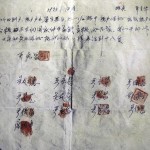
Pictured above (via Marginal Revolution): Farmers from 18 households in Xiaogang village (Fenyang County, Anhui Province) signed this contract bringing a de facto (not de jure) end to collective farming.
Economists Tyler Cowen and Alex Tabarrok said the following of the Xiaogang Contract:
The Great Leap Forward was a great leap backward – agricultural land was less productive in 1978 than it had been in 1949 when the communists took over. In 1978, however, farmers in the village of Xiaogang held a secret meeting. The farmers agreed to divide the communal land and assign it to individuals – each farmer had to produce a quota for the government but anything he or she produced in excess of the quota they would keep. The agreement violated government policy and as a result the farmers also pledged that if any of them were to be killed or jailed the others would raise his or her children until the age of 18.
The change from collective property rights to something closer to private property rights had an immediate effect, investment, work effort and productivity increased. “You can’t be lazy when you work for your family and yourself,” said one of the farmers.
Word of the secret agreement leaked out and local bureaucrats cut off Xiaogang from fertilizer, seeds and pesticides. But amazingly, before Xiaogang could be stopped, farmers in other villages also began to abandon collective property. In Beijing, Mao Zedong was dead and a new set of rulers, seeing the productivity improvements, decided to let the experiment proceed.
The rapid increase in China-DPRK trade and information exchanges raises the question of just how many North Koreans have heard of the Xiaogang contract or how many villages have implemented similar measures?
For its part, the Workers Party has employed a mixture of both top-down agricultural policies and accommodation of bottom-up economic innovations to increase food availability. From a top-down perspective, the DPRK has promoted “technological inputs” (fertilizer production, terraced hillsides, large irrigation projects, land reclamation, land rezoning, new foodstuff factories, improved management techniques, CNC) and multilateral aid outreach (official and private food aid from abroad). From a bottom-up perspective, the DPRK has offered and expanded economic incentives (kitchen/private plots, farmers’ markets, general markets, July 2002 Measures, 8.3 Measures, accommodation of some illegal activity, family-based work team units on collective farms). The combination of all these efforts, however, has obviously not resulted in food security–for a number of reasons that are too lengthy for a simple blog post.
If you are interested in learning more about the DPRK’s agricultural policies, I have posted below some papers (PDF) covering different stages in the North Korean agriculture sector: Pre-war, post war (collectivization), and post famine (arduous march). They are all well worth reading:
1. Lee Chong-Sik, “Land Reform, Collectivisation and the Peasants in North Korea”, The China Quarterly, No. 14 (Apr. – Jun., 1963), pp. 65-81
2. Yoon T. Kuark, “North Korea’s Agricultural Development during the Post-War Period”, The China Quarterly, No. 14 (Apr. – Jun., 1963), pp. 82-93
3. Andrei Lankov, Seok Hyang Kim, Inok Kwak, “Relying on One’s Strength: The Growth of the Private Agriculture in Borderland Areas of North Korea”
